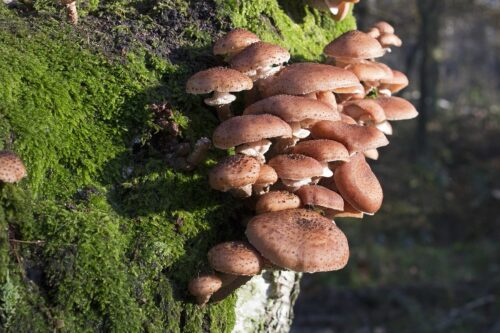Dark hon
Do not confuse with:
Honey fungus
Dark hon
The cap of this hon
Infestation by the dark hon
The affected wood rots away, making the tree susceptible to windthrow.
The dark honey fungus resembles the true honey
The dark honey fungus is not poisonous and is considered edible.
Where to find
- Deciduous and coniferous trees (sandy soils)
Control
After infestation by the dark hon
Prevention
Does not apply.

